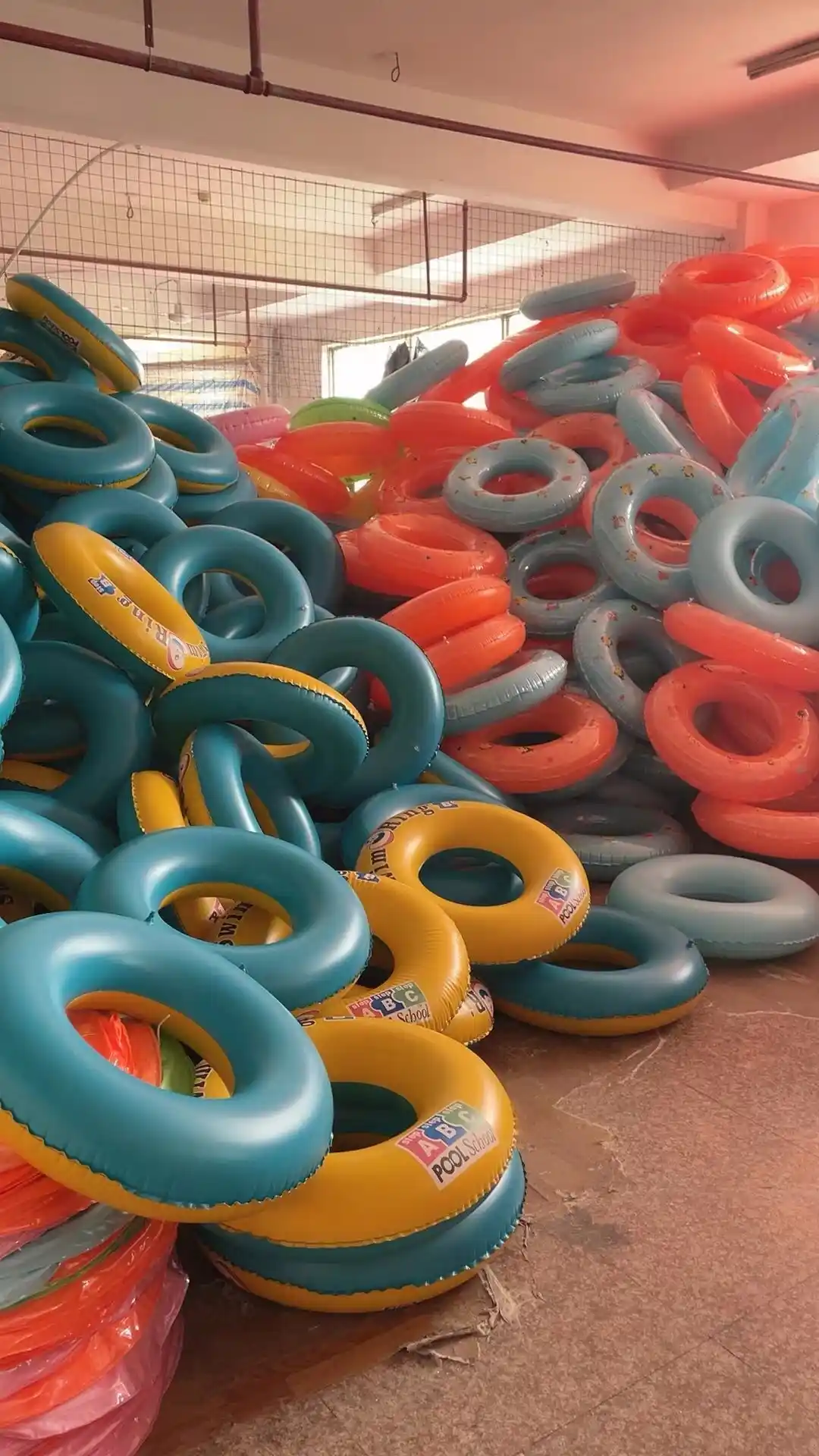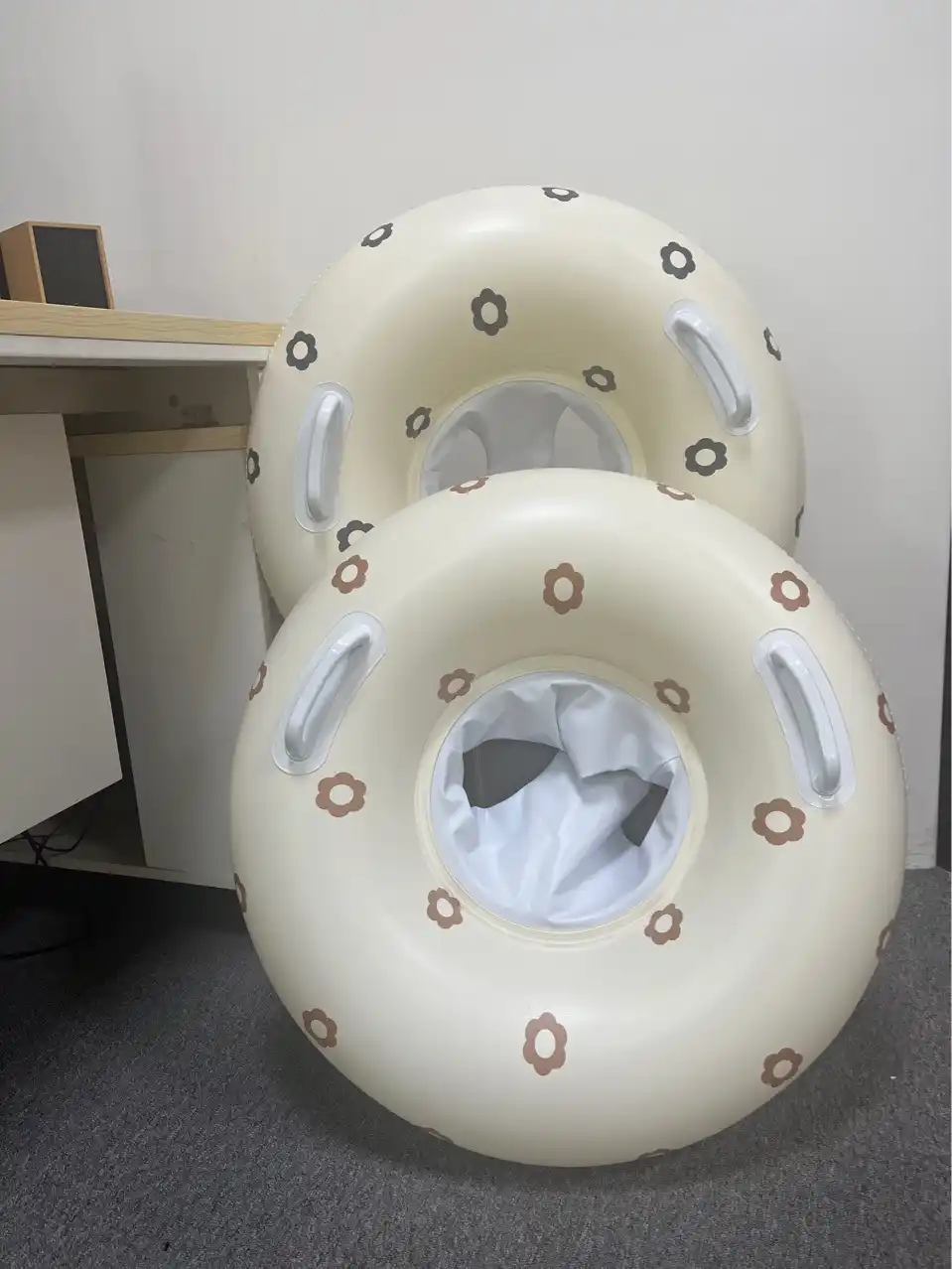As the world shifts toward sustainability, even the most beloved childhood staples are getting a green makeover. Enter eco-friendly swimming ring suppliers—manufacturers redefining aquatic fun by prioritizing planet-friendly materials, energy-efficient production, and circular lifecycle practices. These suppliers aren’t just meeting a trend; they’re addressing a critical need: reducing plastic waste, lowering carbon footprints, and ensuring that the joy of water play doesn’t come at the expense of the environment. Let’s explore how these innovators are reshaping the swimming ring industry.
The Case for Eco-Friendly Swimming Rings
Traditional swimming rings, often made from virgin PVC or low-quality plastics, contribute to the global plastic crisis. Most end up in landfills or oceans, taking centuries to decompose and leaching harmful chemicals into ecosystems. For eco-conscious consumers—parents, brands, and retailers—this is unacceptable.
Eco-friendly swimming rings address these issues head-on:
– Reduced Plastic Waste: Using recycled or bio-based materials diverts plastic from landfills.
– Lower Carbon Emissions: Energy-efficient production cuts greenhouse gas emissions.
– Safer for Wildlife: Non-toxic materials prevent harm to marine life (e.g., sea turtles mistaking rings for jellyfish).
– Consumer Demand: A 2023 survey found 68% of parents prefer eco-friendly kids’ products, driving retailers to stock sustainable options.
How Eco-Friendly Suppliers Innovate
Leading eco-friendly swimming ring suppliers combine cutting-edge technology with sustainable practices to deliver products that are both functional and planet-positive. Here’s how they achieve it:
1. Recycled and Bio-Based Materials
The foundation of eco-friendly swimming rings lies in smart material choices:
– Post-Consumer Recycled (PCR) PVC: Factories process discarded PVC products (e.g., old pipes, packaging) into new swimming ring material. For example, a supplier might use 30% PCR PVC, reducing reliance on virgin plastic and lowering landfill waste.
– Plant-Based Polymers: Innovations like bio-polyethylene (derived from sugarcane) or algae-based TPU offer a renewable alternative to petroleum-based plastics. These materials have a 40–60% lower carbon footprint than traditional plastics.
– Ocean Plastic Recovery: Some suppliers partner with coastal cleanup organizations to source plastic waste from beaches and oceans, transforming it into vibrant, durable rings. This not only cleans waterways but also raises awareness about marine conservation.
2. Energy-Efficient Production
Sustainability extends beyond materials to how products are made. Eco-friendly factories prioritize:
– Renewable Energy: Solar panels, wind turbines, or hydropower systems power production lines, reducing fossil fuel dependence. A factory in Southeast Asia, for instance, uses solar energy to run its injection molding machines, cutting emissions by 25%.
– Waste Reduction: Closed-loop systems recycle scrap materials (e.g., PVC trimmings) back into production, minimizing waste. A supplier might recover 90% of its material waste, turning scraps into new rings or packaging.
– Low-Water Manufacturing: Advanced techniques like air-drying instead of chemical drying reduce water usage by 70%, preserving local water resources.
3. Non-Toxic, Child-Safe Formulas
Eco-friendly doesn’t mean compromising on safety. Reputable suppliers use:
– Phthalate-Free Additives: Traditional PVC often contains phthalates (plastic softeners linked to health risks). Eco-friendly factories use natural alternatives like citric acid esters, ensuring products are safe for children’s skin.
– UV-Resistant Coatings: Plant-based coatings (e.g., linseed oil derivatives) replace petroleum-based ones, preventing fading and degradation without harmful chemicals.
– Biodegradable Inks: For custom designs, water-based or soy-based inks replace volatile organic compound (VOC)-emitting options, reducing air pollution.
4. Circular Lifecycle Practices
True sustainability means designing products for reuse, repair, and recycling. Eco-friendly suppliers adopt:
– Repairable Designs: Reinforced seams and modular components allow rings to be fixed (e.g., patching a small tear) instead of discarded. A supplier might include a free repair kit with each purchase.
– Take-Back Programs: Consumers can return worn rings to the manufacturer for recycling, incentivized by discounts on new purchases. This closes the loop, ensuring materials stay in use.
– End-of-Life Guidance: Clear instructions for recycling (e.g., “Send to local plastic recycling bin”) or composting (for bio-based rings) empower users to dispose of products responsibly.
Certifications That Validate Sustainability
To build trust, eco-friendly swimming ring suppliers pursue third-party certifications that verify their claims. Key certifications include:
– EcoLabel (EU): Certifies products with reduced environmental impact across their lifecycle.
– Global Organic Textile Standard (GOTS): For bio-based materials, ensuring organic content and safe processing.
– B Corp Certification: Recognizes companies meeting rigorous social and environmental standards.
– Ocean Bound Plastics (OBP) Certification: Validates that ocean-recovered plastics are sourced and processed ethically.
The Business Case for Eco-Friendly Swimming Rings
For retailers and brands, partnering with eco-friendly swimming ring suppliers isn’t just ethical—it’s profitable:
– Consumer Loyalty: 73% of millennials and Gen Z prefer brands with clear sustainability commitments, driving repeat purchases.
– Premium Pricing: Eco-friendly products often command 10–20% higher prices, boosting profit margins.
– Regulatory Compliance: As global bans on single-use plastics expand (e.g., EU’s SUP Directive), eco-friendly suppliers future-proof businesses against restrictions.
Conclusion: Choosing Eco-Friendly Means Choosing the Future
Eco-friendly swimming ring suppliers are more than manufacturers—they’re catalysts for change, proving that fun and sustainability can coexist. By prioritizing recycled materials, renewable energy, and circular practices, these suppliers are turning every splash into a step toward a greener planet.
Whether you’re a parent seeking safe, planet-friendly toys, a retailer curating an eco-conscious inventory, or a brand building a legacy of responsibility, eco-friendly swimming rings offer a way to enjoy water play while protecting the environment. Invest in sustainability today, and let the waves carry a message of hope for tomorrow.
Article link:https://www.vlefooena.com/manufacturer/4487/




No reply content